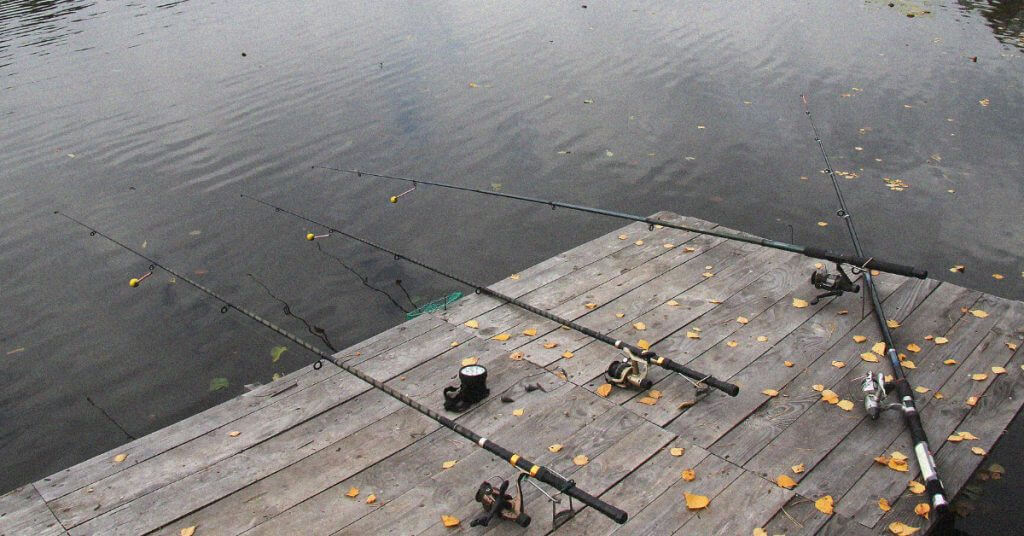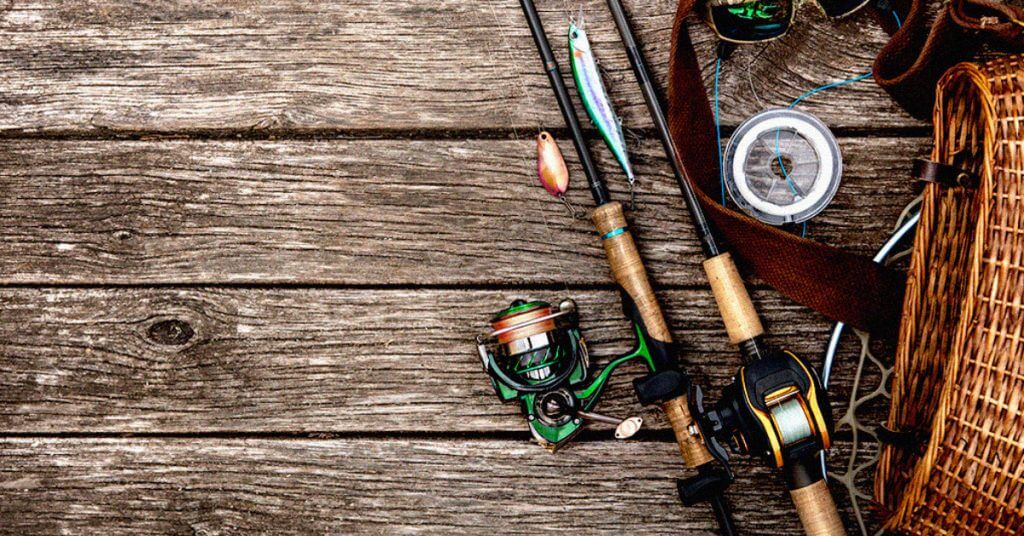I spent a weekend testing over 30 flipping rods in on the East Pearl River in some of South Louisiana’s heaviest cover.
Here’s what I discovered about which ones are actually worth your money.
Last updated: January 23rd, 2025
Best Overall: G. Loomis IMX-Pro Bass Casting Rod

Specs
Pros
Cons
Why I Chose It
After years of flipping experience, this G. Loomis IMX-Pro Casting Rod changed everything I knew about heavy-cover fishing.
At just 6 ounces, it’s noticeably lighter than standard flipping rods, which made a huge difference during long days working heavy cover.
That said, here’s what really impressed me: I was punching through thick grass mats with a weedless craw and 3/8oz bullet weight, and I could still feel every little tick and bump on the bottom.
I mean everything – from shells to hydrilla to wood – each had its own distinct feel. That’s not marketing talk – I spent hours verifying this because I couldn’t believe how sensitive it was.
The secret sauce here is what G. Loomis calls their IMX-Pro blank technology. Basically, they pack more graphite into a thinner rod by adding resin to the mix.
They say they’ve used 15% less material than their other rods, but still made it stronger. I agree – when I was ripping bass out of thick cover, this thing didn’t even flinch.
The rod’s Fuji K-frame guides delivered the smoothest, quietest flips I’ve tested. Plus, the accuracy was spot-on. Every flip landed exactly where I aimed.
All said and done, at over $350, the G. Loomis IMX-Pro is a serious investment. But after extensively testing this rod (the 7′ moderate-fast action variant 843C MBR) in South Louisiana’s meanest cover , I can tell you that it is worth every penny.
Best Budget: Abu Garcia Vengeance

Specs
Pros
Cons
Why I Chose It
Here’s an actual budget flipping rod hack. NO this is not clickbait.
I’ve used many budget rods in my life and many fell short when it comes to flipping. But the Abu Garcia Vengeance Casting Rod surprised me – in a good way.
It comes in five different lengths (6’6″, 6’9″, 7′, 7’3″, and 7’6″), giving you plenty of options based on your fishing style.
On my trip, I was using the Vengeance and caught my largest bass of the day; a 5.3-pound fish that smashed my Baby Brushhog underneath a dock. The rod’s stiffness helped me rip that bass out before it could tangle in the pilings.
But I think what mainly makes this rod punch above its $70 price tag is its 24-ton graphite blank that delivers impressive sensitivity.
Quick fishing lesson: higher tonnage means stiffer graphite, which helps you feel those subtle bites better.
The rod’s split grip handle with EVA foam felt great in my hands during long fishing sessions. I especially liked how the trigger fit in perfectly between my fingers.
Here’s the only downside I found: the guide rings run slightly larger than typical flipping rods. This causes some line whip, but honestly, that’s a small trade-off for the price.
Pro tip: If you want to step up slightly, check out the Abu Garcia Vendetta. It’s about $20 more and uses a 30-ton blank instead of a 24-ton. But honestly? The Vengeance performs almost identically.
Overall, after extensive testing, I can say this Abu Garcia Vengeance delivers in terms of strength, comfort, and sensitivity.
If you’re looking for an affordable flipping rod that can hang with the premium options, this one won’t let you down.
Best Tournament Grade: G. Loomis GLX Jig & Worm Series
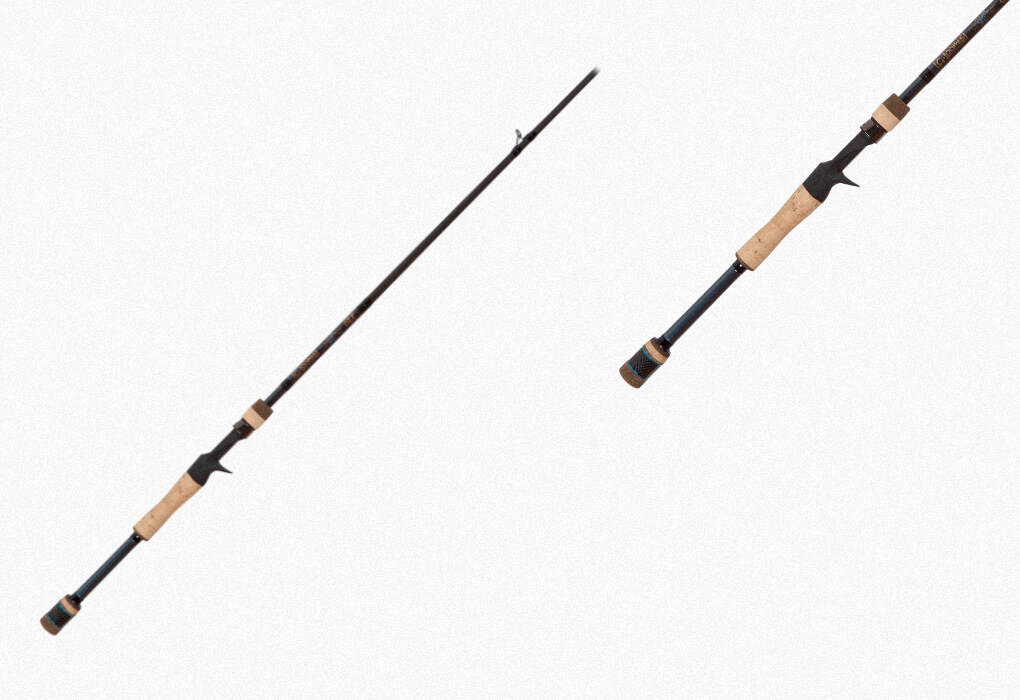
Specs
Pros
Cons
Why I Chose It
I know talking about a “luxury” fishing rod might seem over the top, but after testing the G. Loomis GLX Jig and Worm Casting Rod (model GLX 852C JWR), I need to share something with you.
During my weekend of testing, I landed three out of four bites while flipping heavy cover. That’s an excellent hook-up rate, especially for flipping.
G. Loomis claims these rods are 20% lighter than competitors. Usually, I take marketing claims with a grain of salt, but this rod actually felt lighter even than my Best Overall pick, the G. Loomis IMX-Pro Bass.
G. Loomis uses what they call “GLX Proprietary Blank Materials” – basically a fancy way of saying “Graphite Luxury.” But here’s why that matters:
They’ve added these “Micro-tapers” – extra rod material at potential breaking points. In my test, this seems to have made a big difference when yanking bass out of thick cover.
Another thing I noticed while testing this rod is the guides. The guides are made by FUJI which makes high-end K-frame SIC guides (SIC: Silicon Carbide – a really slick ceramic material).
During testing, my underhand casts were whisper-quiet and smooth as butter. No line flutter and no resistance.
The only possible downside is that after fishing with this GLX Casting Rod, everything else feels… well, mediocre!
Is it worth the tournament-grade price tag of over $500? If you’re serious about competing or want the absolute best flipping experience possible, I’ll say: absolutely.
Best Heavy: Cashion ICON Casting Rod
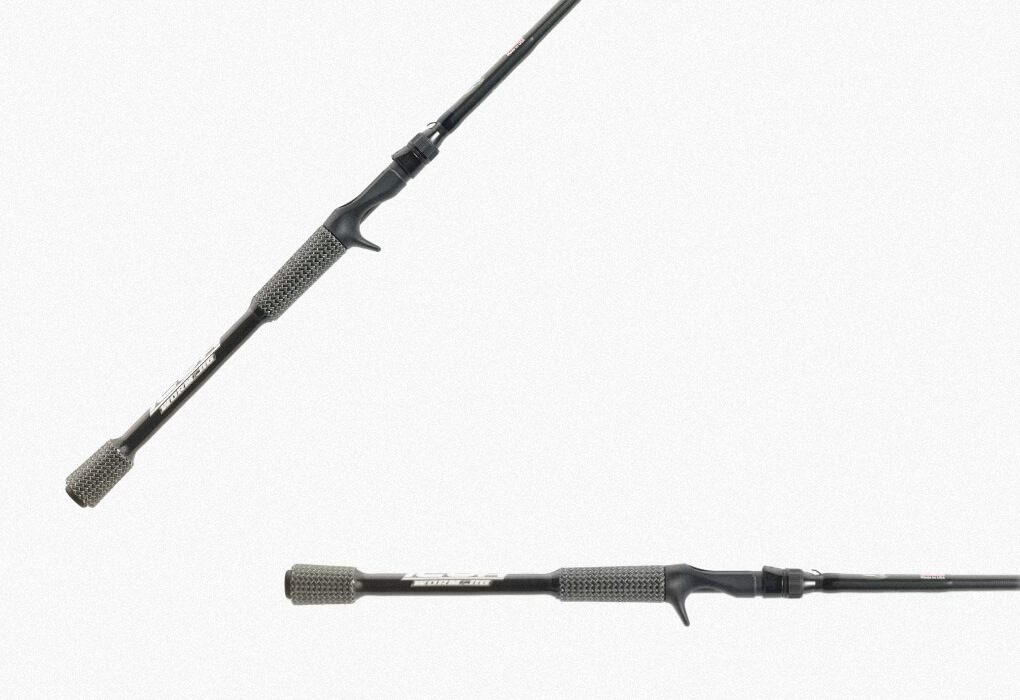
Specs
Pros
Cons
Why I Chose It
If you fish heavy cover, you NEED this Cashion ICON Casting Rod. During my testing, I found that it offered the perfect balance between backbone and accuracy.
This rod uses carbon fiber which is a ribbon-like form of graphite stronger than a 100% graphite blank. In my experience, this makes a significant difference when you’re battling fish in thick cover.
One of the main things that I like about this rod is its accuracy. I was flipping into tiny holes in alligator grass, and despite being the stiffest rod on this list, the tip loaded perfectly for pinpoint accuracy.
When it comes to performance, this rod excelled with punch rigs and handled Texas rigs up to 1oz like a champ. I feel it is comparable to the Vengeance’s sensitivity but is more suited for heavy cover.
Here are two features that stood out for me about this rod:
- The American Tackle micro-guides are some of the smallest I’ve ever fished with, making for butter-smooth flips.
Quick heads up though – they’re too small for leader knots, so you’ll need to run straight braid. - The Kevlar-wrapped handle. I’ve had many rod handles tear apart through the years so this one is a bonus for sure.
Bottom line: If you’re regularly battling big bass in heavy cover, I can say that the Cashion ICON is an excellent choice.
Best Combo: Abu Garcia Revo X Baitcast

Specs
Pros
Cons
Why I Chose It
Let me tell you about my time on the water with the Abu Garcia Revo X Combo.
Coming in at just 7.9 ounces, this lightweight setup helps you flip lures without fatigue. I fished for over three hours with it and I could go all day even with the 1oz. jig that I was using.
I’ll cover the rod first.
The rod comes in two lengths: 7′ and 7’4″. It’s built on a 30-ton graphite blank, giving you the backbone needed to muscle bass out of thick cover.
I found the trigger placement to be spot-on, letting me keep one finger on the blank at the grip split for maximum sensitivity.
Now for the star of the show in my opinion – the Revo X Low Profile Baitcaster reel. It uses 7 stainless steel bearings which made for a really smooth retrieve.
General Tip: In reels, more bearings equal smoother retrieves.
Throughout my testing, I landed four fish on three strikes, including a feisty 2.6-pounder.
The rod never slipped once, even when I was yanking fish out of tight cover. The EVA rubber handle provided me with that perfect balance of firm-yet-comfortable grip.
Note: I did notice the first two guides were slightly misaligned on my unit. It didn’t affect performance, but it’s worth mentioning.
On a related note, I had also tested the less expensive Abu Garcia Max STX Low Profile Combo earlier, and honestly, it performed similarly to this one. But despite costing almost an extra $80, I can say that the Revo X still edges it out in overall quality.
In the end, I found the Abu Garcia Revo X to be a great rod and reel match. If you’re looking to save some cash by buying a flipping combo instead of separate pieces, this is the one to go with!
Methodology
It’s taken much trial and error over my fishing career to be able to know what to look for in a flipping rod.
I’ve taken that knowledge and experience and combined it with a weekend’s worth of rod testing in the southern section of the East Pearl River.
During the two days of flipping lures in alligator grass, hydrilla, and lily pads, I pitched various types of jigs and painstakingly looked at several rod qualities that make a great flipping rod.
Here are some parameters that I used to come up with this guide to choosing the best flipping rods:
- Sensitivity: Let’s face it, flipping isn’t exactly a sight-specific way of catching bass. Most of the time your lure is buried underneath a 4-inch grass mat.
For this reason, rod sensitivity plays a huge role in letting you know when a bass picks up your jig.
- Action: Rod action is crucial when it comes to flipping. Does it have enough load to sling flip heavy jigs? Is it fast enough to set the hook quickly on a subtle bite?
In my years of flipping for bass, I’ve learned that fishing with a rod with the wrong action can severely hurt your chances of catching bass.
- Guide Quality: While guides don’t rise to the top on the list of importance in other bass fishing styles, when flipping it’s very important that the guides are made of high-quality material because of the physical nature of flipping for bass.
- Casting Accuracy: Great pitching control is a plus when flipping for bass. That 4-inch opening in a grass mat is the perfect opportunity to drop your jig down into the perfect spot.
It’s important to choose a rod that excels in flipping jigs into the exact spot needed.
- Hookup Percentage: When flipping for bass, setting the hook is only half the battle. It’s often the case that you’ll have to rip the fish out of heavy cover in order to land it.
Having a rod that keeps the fish hooked is one of the most important features to look at when deciding on what rod to choose for a flipping rod.
How to Choose a Flipping Rod
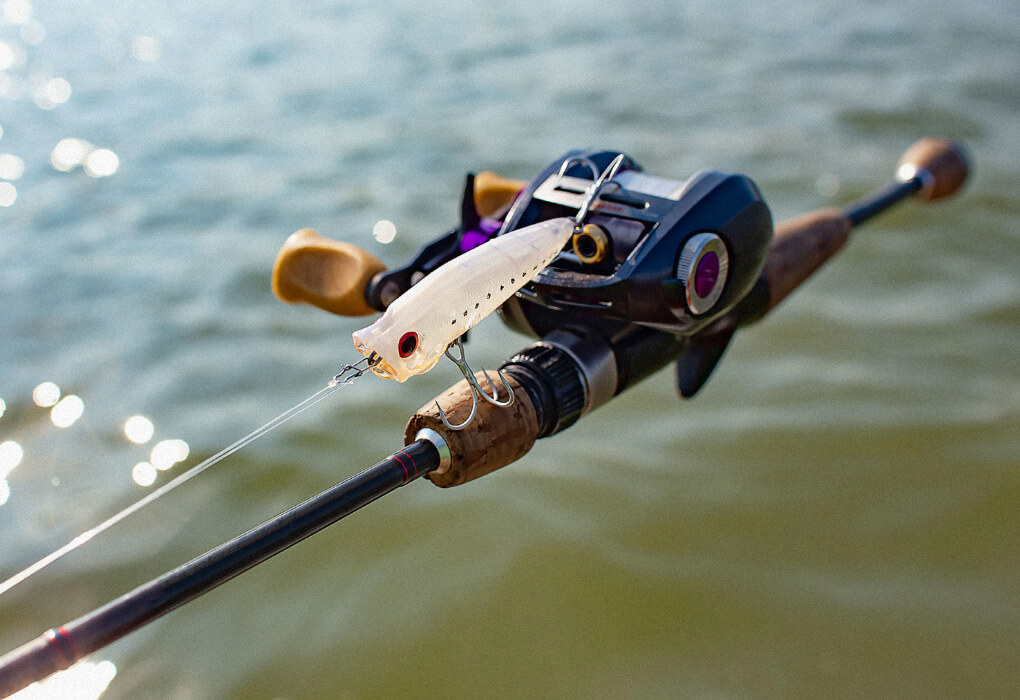
The art of flipping for bass is probably the last skill that bass anglers develop but it’s what separates the great ones from the mediocre fishermen.
Flipping allows you to reach certain spots that are impossible to get to by using an overhand cast. Graduating to a flipping rod is a big step but it’s not that complicated if you know what to look for in a rod.
Length
Flipping is usually done in close distance to the shoreline or wharfs so rod length isn’t as important. There’s no need for a really long rod to whip that lure out there, so you’ll want to look at rods that are in the 6.9 to 7.4 range.
A good tip to keep in mind with flipping rods, and all rods for that matter, is the shorter the rod, the more accurate the cast!
Power
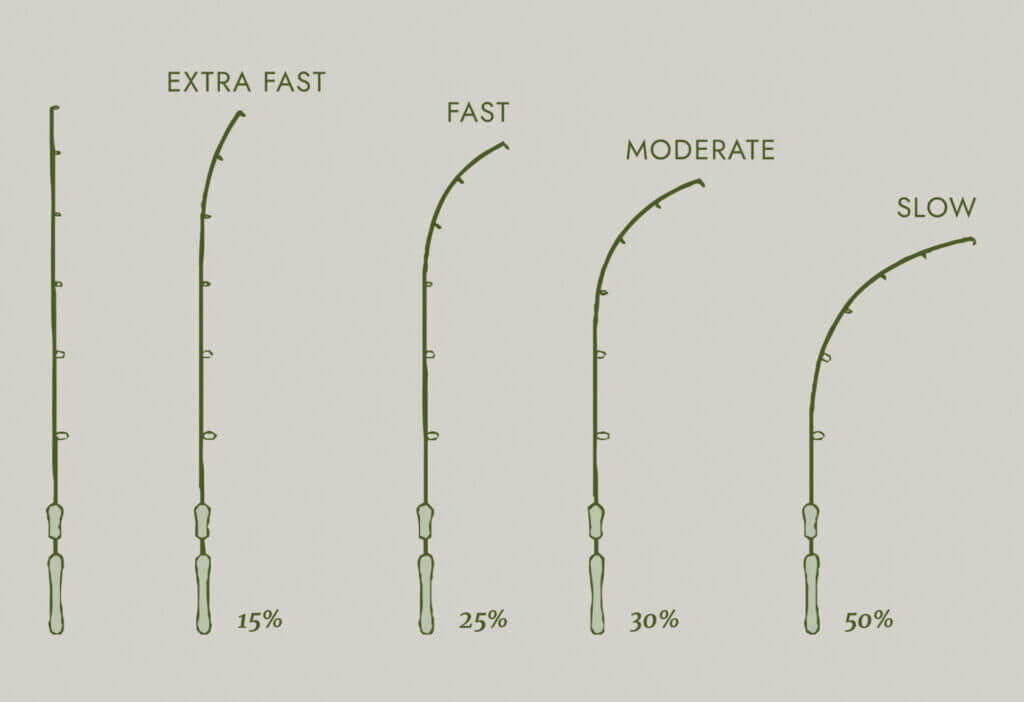
Probably the most important factor to consider is the power of the rod. The power refers to how much backbone the rod has and, ultimately, what size fish you’ll be able to handle with that rod.
You want to look in the medium-heavy to heavy range.
You have to remember one thing with flipping; it’s very physical even when you don’t hook a fish. You’re going to get snagged on structure so having a workhorse rod is very important.
Action
Rod action is important in the flipping world as well. You’ll want a fast action rod because it will help you set the hook quicker.
Another reason to use a fast action rod is the speed at which you’re going to need to get that big fish out of the grass or wood.
In my experience, if you let that fish swim around for more than three or four seconds when fishing structure, your chances of landing him drop big time!
Line Weight

You want to make sure you’re fishing around a 20lb test when flipping for bass because the heavy line will help you work through dense cover, but it will ensure you have enough strength when you do land a big bass.
There’s no sense in underestimating what line to use when there’s always a chance of hooking a 5+ pound fish underneath some lilies or floating grass.
Final Thoughts
Flipping to catch bass can be very productive in terms of numbers, but more importantly, size.
There are some really big bass caught every day by anglers who are flipping structure close to the boat.
During my test on the East Pearl River I was able to try out plenty of different rods and have come up with a list that I’m sure will help you select your next flipping rod.
So let’s review my top pick!
For the category of Best Overall Flipping Rod, I choose the G. Loomis IMX-Pro Bass Casting Rod.
The rod excelled in all the categories that define a legendary flipping rod including, strength, sensitivity, and handle quality.
While the IMX-Pro won overall, you really can’t go wrong with all the rods mentioned in this best flipping rod guide I’ve put together.
Give them a try and tell me what you think! I’d love to hear from you!



